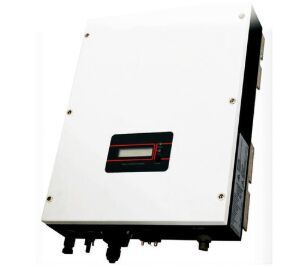The string inverter adopts modular design. Each photovoltaic string corresponds to an inverter. The DC end has the function of maximum power tracking, and the AC end is connected to the grid in parallel. Its advantage is that it is not affected by module differences between strings and shadows. At the same time, it reduces the mismatch between the optimal operating point of the photovoltaic cell module and the inverter and maximizes power generation.
In a centralized grid-connected inverter system, the square array of components arrives at the inverter after two confluences. The maximum power tracking function (MPPT) of the inverter cannot monitor the operation of each component, so it is impossible to make every component in The best operating point, when a component fails or is blocked by shadows, it will affect the power generation efficiency of the entire system. Therefore, when the battery components are blocked, the centralized power station will be greatly affected, and the string-type power station will only be affected by the blocked string of the corresponding MPPT.

String inverter: Main reason for selection
Under normal circumstances, the installation distances and installation angles between the various components are different. Partial shading will inevitably occur during a certain period of the day, especially when the sun's altitude angle is low in the morning and evening, or some cells may be blocked by vegetation.
Power stations that use string inverters can use components in different orientations in the same project(static mobile power inverter). For example, in mountain projects, due to the complex topography of the area, there is little flat land, land leveling cannot be done, and the topography facing due south is also limited. Therefore, to ensure capacity, the southeast and southwest slopes and east and west slopes must be fully utilized. At this time, the installation direction of the battery board cannot be arranged completely facing the south.
A power station using string inverters can use different types of components in the same project, which is not possible in a traditional centralized inverter power station. String inverters also have the advantages of low self-consumption, small failure effects, and easy replacement and maintenance. The centralized inverter itself consumes a lot of power and the ventilation and heat dissipation of the computer room. System maintenance is relatively complicated. When a fault occurs, the entire power station will be paralyzed. When a string inverter fails, only a string of components will stop generating power. It can operate as usual, which greatly reduces losses.
static inverter: Solid state inverter
The string grid-connected inverter is small in size and light in weight, and it is very convenient to transport and install. It does not require professional tools and equipment and does not require a special power distribution room. It can simplify construction and reduce occupation in various applications. Ground, the DC line connection does not require DC combiner boxes and DC distribution cabinets. This means that the repair time period of string inverters is shorter than that of centralized inverters.
This is the reason why string inverters are widely used. Of course, there are many other reasons that have not been listed. For example, a flexible Internet monitoring solution can allow power stations using string inverters to accurately monitor each group of panels. It is easier to find out the problematic components and control the detailed information and history of each group of panels in real-time. These are also common reasons for choosing string inverters.